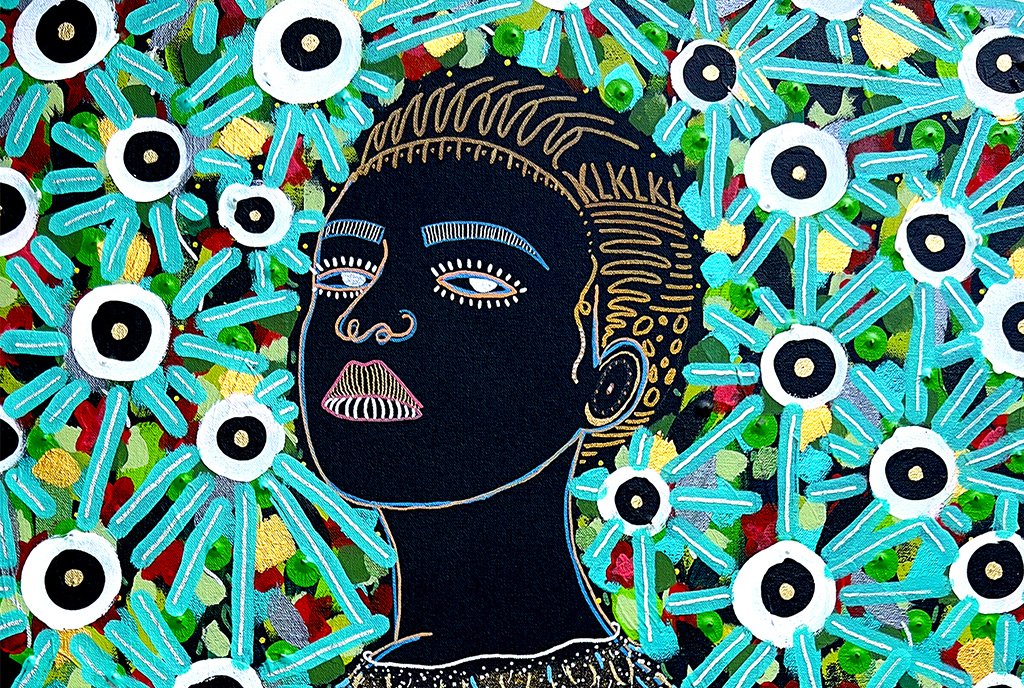
This article is the second installment of NPQ’s series on Community-Driven Philanthropy. In this series, movement leaders explore what’s possible if philanthropy adopts a reparative model—one in which it supports the leadership of BIPOC communities, not just by writing grants, but by shifting assets and control over resources to frontline communities.
The question of land (and its loss) has been prominent throughout African American history. After the US Civil War, many formerly enslaved Black people made tremendous efforts to acquire land. Even though the Union promise of “40 acres and a mule” was not honored, African Americans bought land where they could. By 1910, Black farmers owned somewhere around 14 percent of all US farmland—with estimates of land holdings exceeding 15 million acres.
These gains have since been largely reversed. Nearly 12 million acres of Black-owned land has been lost in the United States over the last century. In Mississippi alone, between 1950 and 1964, Black farmers lost nearly 800,000 acres, the equivalent of a $3.7 billion loss today.
How did this dispossession occur? Via the efforts of private and public actors, programs, and policies, including discriminatory loan programs, market forces, intimidation, and terrorism. Today, many Black farmers who retain land ownership face foreclosures or lawsuits from white farmers, among other challenges. In the face of so much loss and opposition, asset reallocation can be a powerful tool for achieving self-determination for Black farmers and Black agricultural communities.
Nearly 12 million acres of Black-owned land has been lost in the United States over the last century. In Mississippi alone, between 1950 and 1964, Black farmers lost nearly 800,000 acres. It is too late to restore all the land from which Black farmers have been dispossessed. But if philanthropy focused on asset reallocation—ie, the direct transfer of real estate holdings—it could help reverse the decline of Black-owned land holdings, especially if such a new focus was backed by investment in new agroecological infrastructure to support Black communities.
Such land transfers would also enable Black farmers to engage in climate change mitigation practices and would enhance Black people’s food sovereignty. Food can act as medicine, especially when grown and maintained by community members. With control over food systems, Black communities would be able to better prevent and mitigate long-term health problems that impact our communities at disproportionate rates. In other words, landownership, food access, and healthcare are intertwined.
Working towards land rights and self-determination for Black communities also means working towards environmental justice and a just energy transition. A new asset reallocation model, paired with grassroots organizing, would facilitate such a transition at both the local and national levels. Such a model would also fundamentally shift economic and hence political power
Federal legislation and the US Department of Agriculture (USDA) have long blocked these goals. For this reason, we call upon funders to prioritize land transfers and invest in BIPOC-led food economies.
Self-Determination and Land Justice
The Black liberation struggle has always sought Black self-determination. Unrestricted access to capital would enhance such determination, giving Black communities a real choice of who to support and how they engage with social change work and funders—choices they often lack, as the decisions of funding recipients are frequently dictated by institutions far removed from those recipients and their needs. The ultimate goal of asset reallocation is to free Black communities from funders’ mandates by creating a stable asset base that provides Black communities with the economic resources needed to build a self-determining economy that is, as much as possible, independent of the current, extractive economic system—with new tracts of Black-stewarded land held outside of the speculative real estate market.
Given that the number of Black farmers in the United States has fallen by an estimated 98 percent since 1920, we must demand asset reallocation. We must also galvanize our movements, organizers, funders, and institutions to learn from our ancestors, elders, and scholars so that we may carry forward the intergenerational knowledge needed to confront and mitigate the climate crisis facing Black farmers and land stewards.
The Black liberation struggle has always sought Black self-determination.
Blackademics’ cultivators working group and other supporters of the National Black Food Justice Alliance (NBFJA), a research arm comprised of academic and research partners that anchors NBFJA’s projects, have identified a critical need for an agroecological hub to gather data about Black farmers, disseminate information, develop innovative solutions to the problems Black land stewards face, and provide cross-institutional support.
Sign up for our free newsletters
Subscribe to NPQ's newsletters to have our top stories delivered directly to your inbox.
By signing up, you agree to our privacy policy and terms of use, and to receive messages from NPQ and our partners.
The members of the Blackademic working group are committed to deepening our capacity, growing our body of work, and carrying forward the critical legacy of regenerative agriculture and Black land stewardship. We have partnered with Florida A&M University (FAU) to establish the first center dedicated to such work, the Lola Hampton and Frank Pinder Center for Agroecology. Spaces like this can help us remove land from the speculative market and develop sustainable land-use systems.
Currently there is no agroecology program at any of the historically black colleges and universities (HBCUs) created by the 1890 Land Grant Act. Nor is there a land tenure center, as once existed at the University of Wisconsin. The vital role of land grant universities and cooperative extension in supporting farmers in the United States since the Civil War has been well documented. Today, in order to develop new farmers who practice regenerative agriculture, similar support is needed. And for this vision to be realized, the programs in agroecology and land tenure that are developed must be rooted in democratic principles; grounded in community-based, culturally relevant research; and backed by intergenerational knowledge.
We also need sustainable organizations led by Black farmers and their communities that can provide food growing knowledge and wealth building guidance to help Black people achieve long-term health.
To support a shift in power, philanthropy must provide funding that has the cycle of life, not a grant cycle, in mind.
What would be different if these resources were in place? All people would have access to nourishing food, housing, and medical care—which are currently unavailable in many Black communities.
Our Freedom Dream
Black community leaders must be at the forefront of this work, and this requires Black community control of assets—including, critically, ownership of land. Too often, whether intentionally or not, philanthropy uses resources as a weapon. Funding is provided, but for a short-term grant cycle, undermining the ability of community leaders to plan for the long term. The transfer of assets is therefore critical. To support a shift in power, philanthropy must provide funding that has the cycle of life, not a grant cycle, in mind.
In philanthropy, grant deliverables are almost always designed for the funder’s benefit, rather than the benefit of the person or organization receiving the funds. We call upon philanthropies and individual funders to build relationships and investments that truly center Black leadership and liberation.
In short, there must be a radical shift in mindset and power, a new approach that centers the ecosystem—that is, supports a network of organizations working toward a common goal—and funds in alignment with recipient communities. The expertise of communities involved in this land justice work must not be ignored. Funder-driven solutions will not lead us closer to our goals.
Generational trauma and related health issues are a massive drain on Black communities. Healing and getting back to a healthy baseline is a long-term effort that requires long-term resource reallocation. A real Wakanda is possible, but only if Black people have the necessary resources at their disposal.
In the free world of which we dream, our communities are well fed, income is not a barrier to good healthcare, and new education systems are run by and for the community. People would not just survive—they would be able to thrive. Asset and land reallocation can help achieve this world by transforming Black people’s access to economic resources across the United States.











